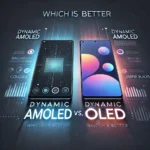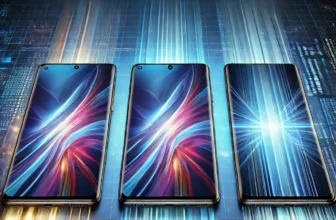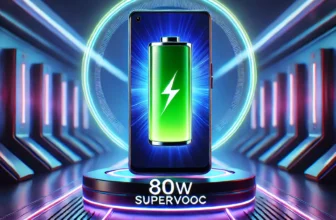
Dynamic AMOLED vs. OLED: Which is Better?
When choosing a smartphone, the display technology often comes down to Dynamic AMOLED vs. OLED. Both technologies deliver stunning visuals, but which one is better for your needs? In this article, we’ll break down the differences between these two to help you make an informed decision.
👉 Related: Curious about how these technologies are applied in real-world flagships? Check out Samsung Galaxy S25 Series: S25, S25+, or S25 Ultra for insights into Samsung’s latest advancements.
What is OLED Display Technology?
OLED, or Organic Light-Emitting Diode, is a display technology where each pixel emits its own light. This self-lighting feature eliminates the need for a backlight, resulting in deeper blacks and higher contrast ratios.
Key Features of OLED:
- Deeper Blacks: Each pixel turns off completely when displaying black, creating infinite contrast.
- Power Efficiency: Consumes less power for darker content, saving battery life.
- Thin and Flexible Design: Supports innovative designs, such as curved or foldable displays.
What is Dynamic AMOLED?
Dynamic AMOLED, developed by Samsung, is an advanced version of AMOLED (Active Matrix Organic Light-Emitting Diode) technology. It builds upon OLED with enhancements in color accuracy, brightness, and eye comfort.
Key Features of Dynamic AMOLED:
- HDR10+ Support: Provides a wider range of colors and improved contrast for HDR content.
- Blue Light Reduction: Filters harmful blue light by up to 42%, reducing eye strain.
- Higher Brightness: Reaches peak brightness levels of up to 2,000 nits, making it ideal for outdoor use.
Dynamic AMOLED vs. OLED: Key Differences Explained
| Feature | OLED | Dynamic AMOLED |
|---|---|---|
| Brightness | Moderate brightness | Extremely bright, perfect for outdoor use |
| Color Accuracy | Excellent | Superior, with HDR10+ support |
| Eye Comfort | Standard | Enhanced with blue light reduction |
| Power Efficiency | Efficient for dark content | Slightly more power-hungry at peak brightness |
| Availability | Available across multiple brands | Exclusive to Samsung devices |
Which is Better for You?
The choice between Dynamic AMOLED vs. OLED ultimately depends on your personal preferences and how you use your device.
Choose OLED If You Value:
- Deeper Blacks: Ideal for watching movies with high contrast scenes.
- Power Efficiency: Great for users who prefer dark mode or darker themes.
- Affordability: Available on devices across multiple brands, often at lower price points.
Choose Dynamic AMOLED If You Value:
- Higher Brightness: Perfect for outdoor use in bright sunlight.
- Enhanced Color Accuracy: Ideal for gaming or media consumption.
- Eye Comfort: Great for reducing eye strain during prolonged use.
FAQs About Dynamic AMOLED and OLED
Conclusion
Both OLED and Dynamic AMOLED displays have their unique strengths. If you’re looking for stunning visuals with deeper blacks, OLED is a great choice. However, if you prioritize brighter screens, color accuracy, and eye comfort, Samsung’s Dynamic AMOLED is the superior option. Consider your usage needs and budget to make the right decision for your next device.




